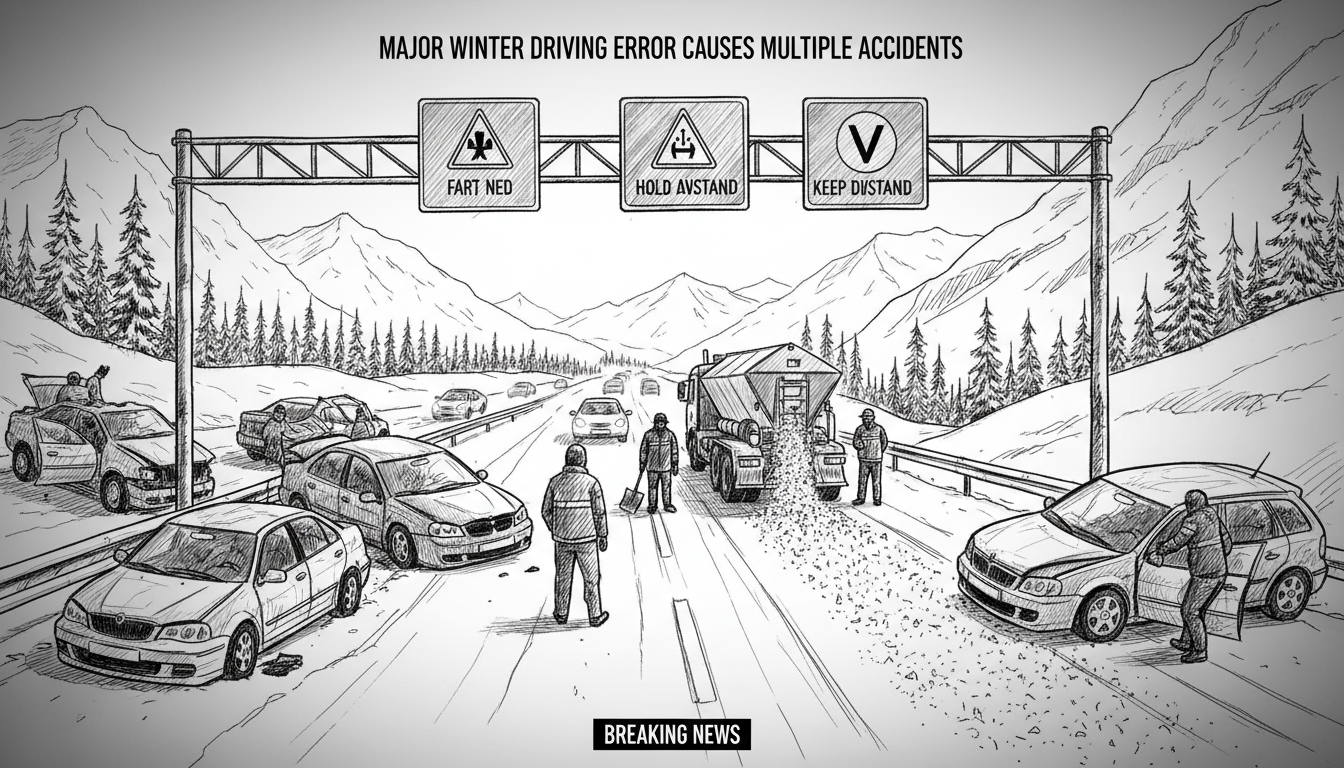Police districts across Norway reported multiple traffic accidents during Tuesday evening. Operations leaders from Trøndelag, Innlandet, Agder, and Eastern police districts confirmed several incidents occurred due to slippery road conditions. The most recent accident happened at 9:54 PM along the E6 highway near Kløfta in Eastern Norway. Police confirmed one vehicle crashed into a guardrail, but no injuries occurred. Officials received multiple reports about slippery roads throughout the region.
Traffic operators at the Norwegian Public Roads Administration noted challenging driving conditions Tuesday evening. Annie Serup, a traffic operator with the Eastern region, emphasized drivers must adjust their behavior during winter conditions. She told reporters that drivers should maintain proper distance from other vehicles and reduce speed appropriately. Serup identified one major mistake that causes many winter accidents. Excessive speed remains the most common error during slippery conditions. Many drivers fail to slow down sufficiently when roads become icy. She advised motorists to ease off the accelerator and drive more cautiously.
When asked about particularly dangerous areas, Serup specified the northbound E6 from Oslo toward Gardermoen and further northward. This highway section currently presents the highest risk for slippery conditions. The Public Roads Administration has deployed salt trucks to treat main roads in Eastern Norway. Crews will gradually move to smaller regional roads as conditions require. Norwegian winter driving conditions demand special attention from both local and international drivers. The country's varied terrain and rapid weather changes create unique challenges that many foreign drivers underestimate.
Norwegian authorities maintain strict winter driving regulations and extensive road maintenance operations. The country invests heavily in winter road safety infrastructure, including advanced weather monitoring systems and rapid response teams. Despite these measures, driver behavior remains the critical factor in preventing accidents. International visitors often struggle with Norway's winter conditions, particularly those from warmer climates. Rental car companies typically provide winter tire options, but many tourists overlook this essential safety measure. The combination of mountainous terrain, frequent precipitation, and temperature fluctuations creates ideal conditions for black ice formation, especially on highway sections like the E6 corridor.
Road maintenance crews work around the clock during winter months, but cannot instantly address every slippery section. Drivers must take personal responsibility for adjusting their speed and driving style according to conditions. The economic impact of winter road accidents extends beyond vehicle damage to include traffic delays, emergency response costs, and potential injuries. Insurance companies report increased claims during winter months, particularly involving international drivers unfamiliar with Nordic winter conditions. Norwegian driving schools emphasize winter driving techniques, but many foreign visitors lack this specialized training. The situation highlights the ongoing challenge of balancing infrastructure maintenance with driver education and personal responsibility during Norway's extended winter season.

